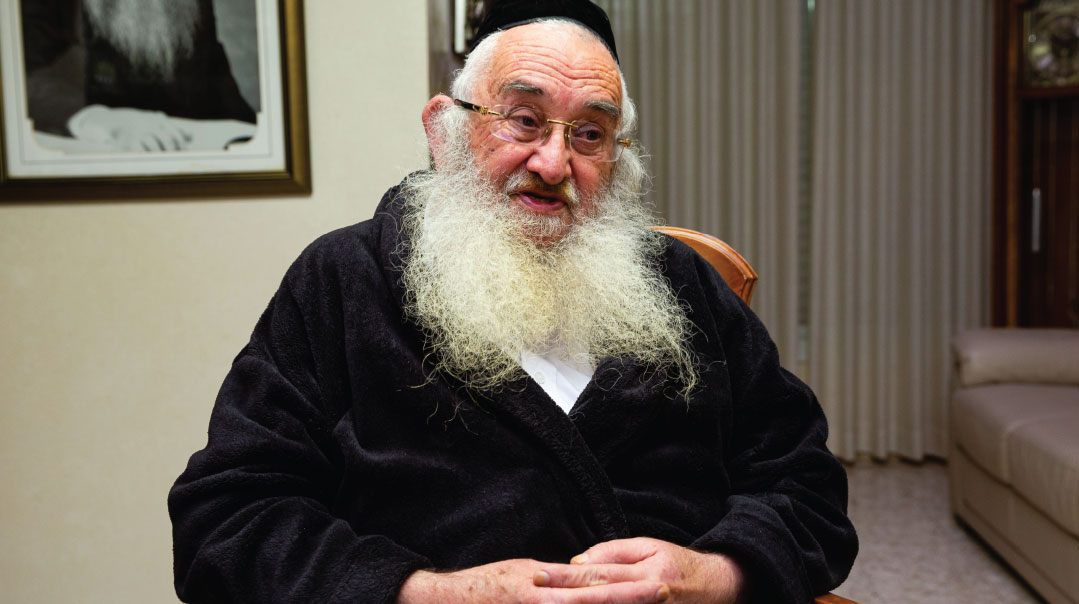Man to Man
| March 4, 2020It’s been 25 years since the passing of Rav Shlomo Zalman Auerbach ztz”l, but time hasn’t dimmed his legacy

V
isit the study of Rav Yechiel Michel Stern, rav of Jerusalem’s Ezras Torah neighborhood, and you’ll note a distinct duo of influences. In his manner of addressing people, you can discern shades of his father, the revered Kaminitzer mashgiach, Rav Moshe Aharon Stern, known for humility and respect for every person. But when he delivers psak, you can see the reflected light of his uncle, Rav Shlomo Zalman Auerbach, whose 25th yahrtzeit falls this week.
A son-in-law of Rav Avrohom Dov Auerbach, rav of the Baka neighborhood, Rav Michel Stern forged a close relationship with the brother of his father-in-law, Rav Shlomo Zalman. Decades later, that relationship’s impact is still clear. It’s there when Rav Michel lifts phone after ringing phone, and as he issues clear rulings with precision, detail, and pleasantness. And when he opens his personal memories, the picture of Rav Shlomo Zalman that emerges is sharp in detail and vivid in character.
Back when Rav Stern was a young man, Rav Shlomo Zalman placed great trust in him, dispatching the young Rav Stern on all sorts of missions. From the instructions he received and the feedback he garnered, he learned crucial information not just about the missions, but about the man behind them.
“When I published the sefer, Hamaor Hagadol, in tribute to my uncle,” Rav Stern recalls, “people who read it came to me with tainehs, complaints. They felt that I’d emphasized all the wrong things — that I had overlooked Rav Shlomo Zalman’s geonus and breadth of knowledge and focused instead on his middos, painting him as a kindly old zeide.”
The Ezras Torah rav is a great storyteller, and he laughs. “But that was the man! I’m not sure we’ve ever seen that blend of such mastery of Torah and such mastery of bein adam l’chaveiro: His insight into other people and his determination to make things good for them were exceptional.”
Rav Michel shares a story of an older bochur who lived alone with his elderly mother. The fellow was looking for a shidduch, with the obvious proviso that whomever he would marry would accept the fact that the aged mother was part of the package and would be joining the young couple in their new home.
There weren’t too many interested candidates, and concerned relatives petitioned Rav Shlomo Zalman to get involved and tell the bochur that it was an unreasonable expectation. Rav Shlomo Zalman defended the bochur. “One doesn’t throw a mother out,” he said, and when the relatives argued, he reiterated his position. “One does not throw a mother out.”
Eventually, the bochur got engaged and he came to receive Rav Shlomo Zalman’s mazel tov wishes.
“You wanted a kallah who is a baalas chesed, a good compassionate soul,” Rav Shlomo Zalman said, “and baruch Hashem, you found her. Her willingness to live with your mother is a good thing — but you should know that when it comes down to it, living with your mother isn’t a good thing for the marriage. I’m asking you, now that you found the baalas chesed you sought, to look into a good, comfortable nursing home for your mother.”
“That,” affirms the Ezras Torah rav, “encapsulates the unique approach of my uncle.”
Rav Stern shares another story. Rav Shlomo Zalman’s brother Rav Eliezer passed away young, and left a son named Reb Yaakov Yosef. When this orphaned nephew got married in Bnei Brak, Rav Shlomo Zalman — who rarely left Yerushalayim — asked if accommodations could be arranged for him to sleep in Bnei Brak after the wedding.
Oops! We could not locate your form.












